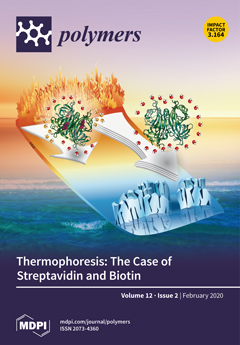Ceramifiable silicone rubber composites play important roles in the field of thermal protection systems (TPS) for rocket motor cases due to their advantages. Ceramifiable silicone rubber composites filled with different contents of ZrSi
2 were prepared in this paper. The fffects of ZrSi
2 on the vulcanization, mechanical and ablation resistance properties of the composites were also investigated. The results showed that the introduction of ZrSi
2 decreased the vulcanization time of silicone rubber. FTIR spectra showed that ZrSi
2 did not participate in reactions of the functional groups of silicone rubber. With the increasing content of ZrSi
2, the tensile strength increased first and then decreased. The elongation at break decreased and the permanent deformation increased gradually. The thermal conductivity of the composite increased from 0.553 W/(m·K) to 0.694 W/(m·K) as the content of the ZrSi
2 increased from 0 to 40 phr. In addition, the thermal conductivity of the composite decreased with the increase of temperature. Moreover, thermal analysis showed that the addition of ZrSi
2 increased the initial decomposition temperature of the composite, but had little effect on the peak decomposition temperature in nitrogen. However, the thermal decomposition temperature of the composite in air was lower than that in nitrogen. The addition of ZrSi
2 decreased the linear and mass ablation rate, which improved the ablative resistance of the composite. With the ZrSi
2 content of 30 phr, the linear and mass ablation rate were 0.041 mm/s and 0.029 g/s, decreasing by 57.5% and 46.3% compared with the composite without ZrSi
2, respectively. Consequently, the ceramifiable silicone rubber composite filled with ZrSi
2 is very promising for TPS.
Full article






